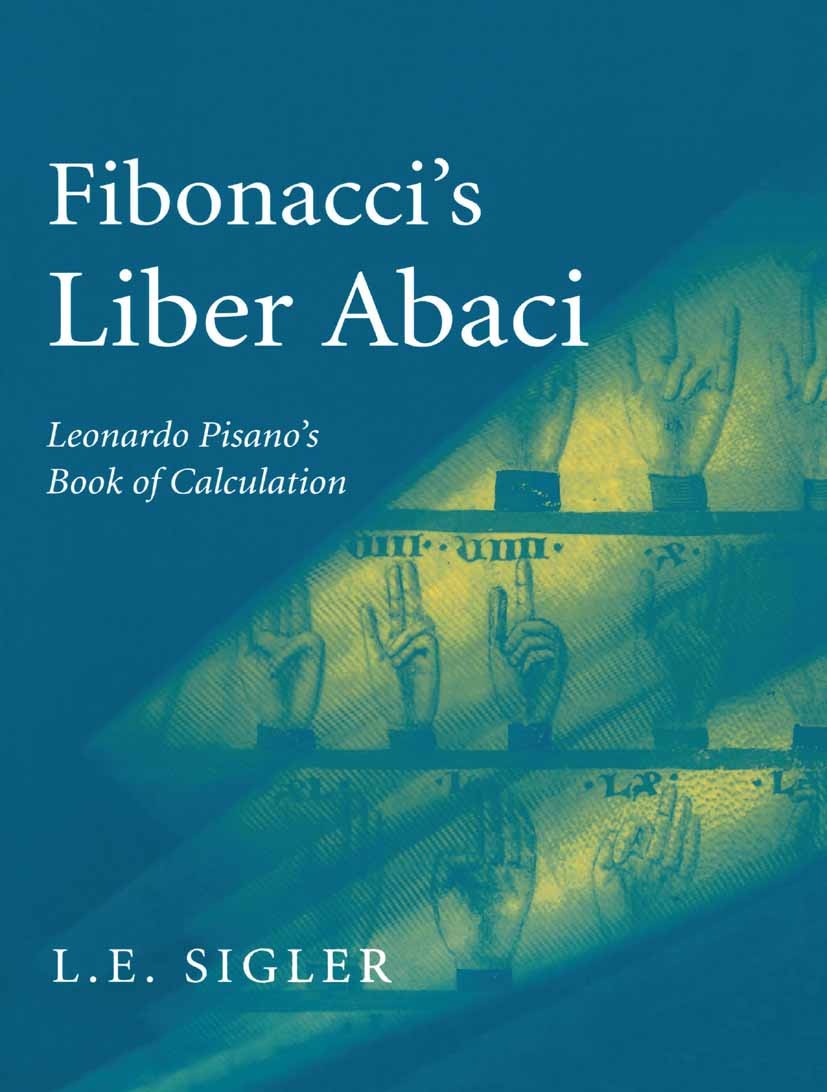| 书目名称 | Fibonacci’s Liber Abaci | | 副标题 | A Translation into M | | 编辑 | Laurence Sigler | | 视频video | http://file.papertrans.cn/343/342486/342486.mp4 | | 概述 | First translation of one of the most important mathematical works of the Middle Ages into a modern European Language | | 丛书名称 | Sources and Studies in the History of Mathematics and Physical Sciences | | 图书封面 |  | | 描述 | First published in 1202, Fibonacci‘s "Liber abaci" was one of the most important books on mathematics in the Middle Ages, introducing Arabic numerals and methods throughout Europe..Its author, Leonardo Pisano, known today as Fibonacci, was a citizen of Pisa, an active maritime power, with trading outposts on the Barbary Coast and other points in the Muslim Empire. As a youth Fibonacci was instructed in mathematics in one of these outposts; he continued his study of mathematics while traveling extensively on business and developed contacts with scientists throughout the Mediterranean world. A member of the academic court around the Emperor Frederick II, Leonardo saw clearly the advantages for both commerce and scholarship of the Hindu positional number system and the algebraic methods developed by al-Khwarizmi and other Muslim scientists..Though it is known as an introduction to the Hindu number system and the algorithms of arithmetic that children now learn in grade school, "Liber abaci" is much more: an encyclopaedia of thirteenth-century mathematics, both theoretical and practical. It develops the tools rigorously, establishing them with Euclidean geometric proofs, and then shows | | 出版日期 | Book 2002 | | 关键词 | algebra; arithmetic; mathematics; proof | | 版次 | 1 | | doi | https://doi.org/10.1007/978-1-4613-0079-3 | | isbn_softcover | 978-0-387-40737-1 | | isbn_ebook | 978-1-4613-0079-3Series ISSN 2196-8810 Series E-ISSN 2196-8829 | | issn_series | 2196-8810 | | copyright | Springer-Verlag New York, Inc. 2002 |
The information of publication is updating

|
|
 |Archiver|手机版|小黑屋|
派博传思国际
( 京公网安备110108008328)
GMT+8, 2025-11-15 08:45
|Archiver|手机版|小黑屋|
派博传思国际
( 京公网安备110108008328)
GMT+8, 2025-11-15 08:45


